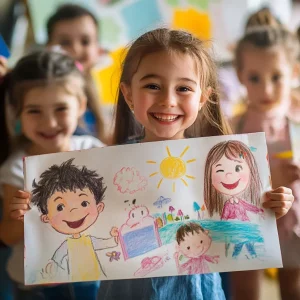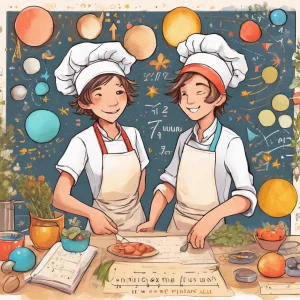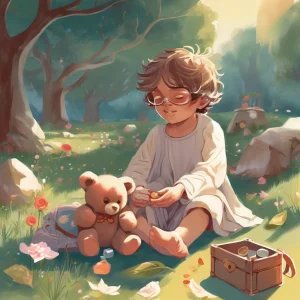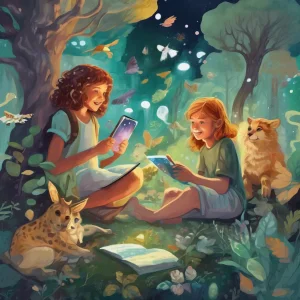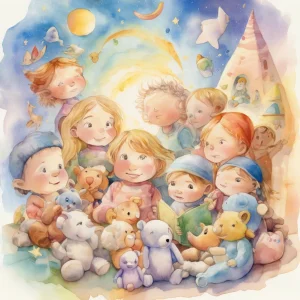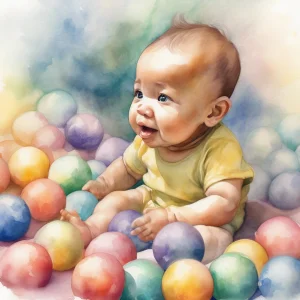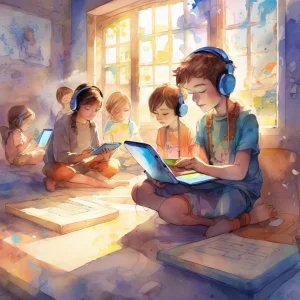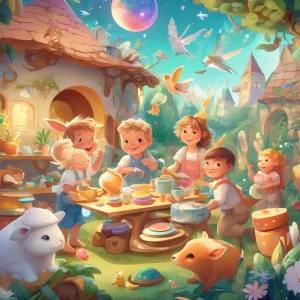Activity
Similar Activities
Magical Storytelling: Create Together with Friends
Children’s Age: 4–6 years
Activity Duration: 15 – 30 minutes
In the Create a Story Together activity, children will explore their creativity, language skills, and teamwork. Get small pieces of paper, colored pencils, and a container ready. K…
Activity Duration: 15 – 30 minutes
Cosmic Conundrum Chefs: Space Word Problem Adventure
Children’s Age: 7–8 years
Activity Duration: 10 – 20 minutes
Let's play Space Word Problem Chefs! We'll use paper, pencils, and space-themed stickers to explore language and problem-solving. Set up a cozy spot, grab your supplies, and get re…
Activity Duration: 10 – 20 minutes
Sensory Treasure Hunt: A Magical Exploration Journey
Children’s Age: 0 month – 6 years
Activity Duration: 10 minutes
Let's go on a Sensory Treasure Hunt! We will use our senses to explore different items like textures, scents, and sounds. You can feel, smell, and listen to each item while blindfo…
Activity Duration: 10 minutes
Enchanted Digital Storytelling Adventure through Nature's Wonders
Children’s Age: 5–18 years
Activity Duration: 50 minutes
Let's go on a "Digital Storytelling Adventure"! We'll create exciting stories using nature-themed digital images and fun drawing tools on a tablet or computer. Get ready to brainst…
Activity Duration: 50 minutes
Enchanted Nature-Based Storytelling Adventure
Children’s Age: 0 month – 6 years
Activity Duration: 5 – 10 minutes
Let's have fun with Nature-Based Storytelling! Find a cozy outdoor spot, lay down a blanket, and bring a basket for collecting leaves and stones. Sit with your child, explore natur…
Activity Duration: 5 – 10 minutes
Emotion Explorers: Storytelling with Feelings Adventure
Children’s Age: 2–3 years
Activity Duration: 5 – 15 minutes
"Storytelling with Feelings" is designed for children aged 24 to 36 months to enhance their communication skills, empathy, and language development by exploring emotions in stories…
Activity Duration: 5 – 15 minutes
Sensory Ball Play: Texture Discovery for Infants
Children’s Age: 3 – 6 months
Activity Duration: 5 minutes
Explore sensory play with textured balls designed for infants aged 3 to 6 months to enhance their sensory, social-emotional, motor, and language skills. Set up a cozy space with so…
Activity Duration: 5 minutes
Empathy Tales: Digital Storytelling Journey
Children’s Age: 6–10 years
Activity Duration: 15 minutes
"Digital Storytelling with Empathy" is a creative activity for children aged 6 to 10, focusing on empathy, self-regulation, and language skills using digital tools. With a tablet o…
Activity Duration: 15 minutes
Nature's Touch: Sensory Nature Exploration for Babies
Children’s Age: 3 – 9 months
Activity Duration: 5 – 10 minutes
Engage your 3 to 9-month-old baby in a sensory nature exploration activity to support their development. Lay them on a soft blanket with safe natural objects and optional toys. Des…
Activity Duration: 5 – 10 minutes
Magical Melodies: Sensory Sound Exploration
Children’s Age: 3 – 9 months
Activity Duration: 5 – 10 minutes
Engage infants aged 3 to 9 months in the Sensory Sound Exploration activity to boost communication, cognitive, and language skills through sensory play. Set up a safe play area wit…
Activity Duration: 5 – 10 minutes
Harmonious Harmony: Musical Money Makers Adventure
Children’s Age: 11–15 years
Activity Duration: 1 hour
"Musical Money Makers" is a fun and educational activity that boosts language development, empathy, economic understanding, and creativity using music and instruments. Set up by ga…
Activity Duration: 1 hour
Sensory Music-Making Session: Sound Story Drawing Adventure
Children’s Age: 2–2.5 years
Activity Duration: 5 – 20 minutes
A sensory music-making activity using household items to enhance sensory development and introduce children to the world of music.
Activity Duration: 5 – 20 minutes



